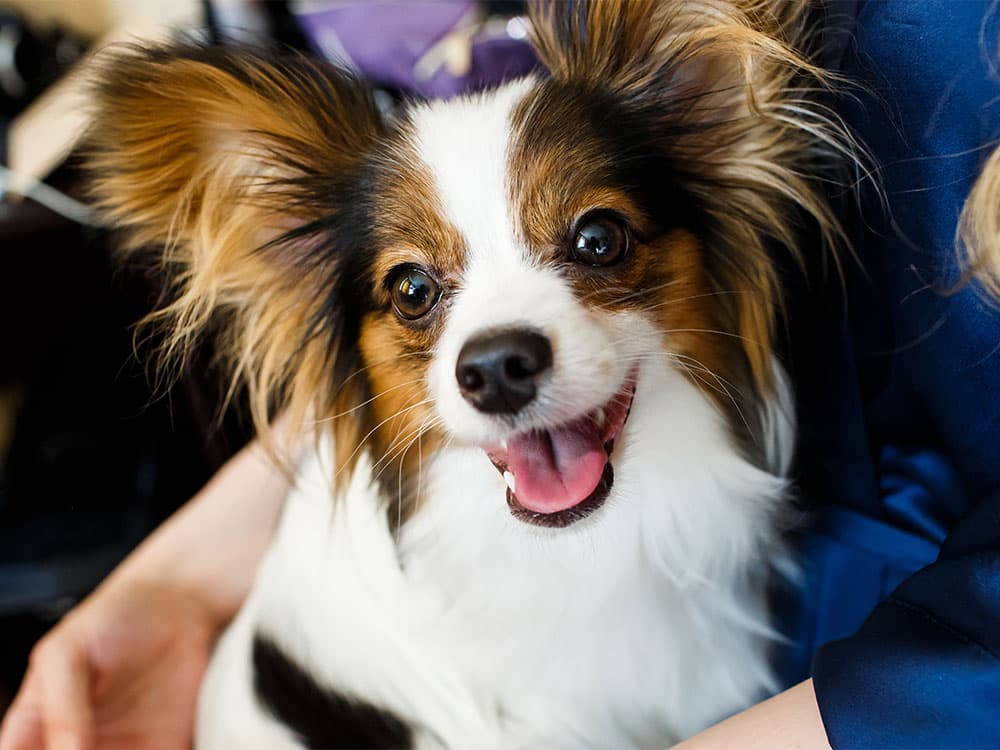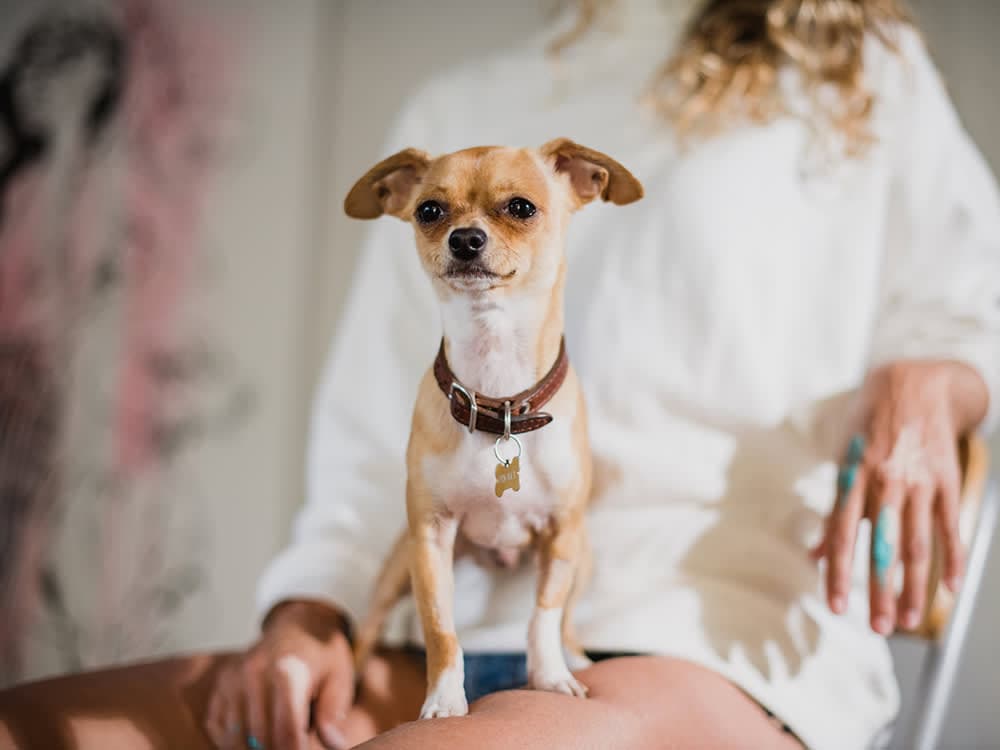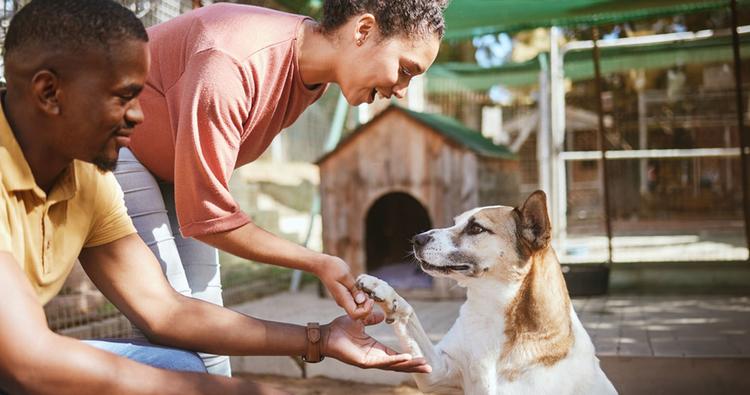15 Best Dog Breeds for First-Time Dog Parents
Is this your first foray into dog parenthood? Read all about the friendliest, most adaptive types of pups who can easily fit into your lifestyle.
Is this your first foray into dog parenthood? Read all about the friendliest, most adaptive types of pups who can easily fit into your lifestyle.
by Alicia Kort, | May 21, 2024

Valentina Barreto / Stocksy
So you want to bring a pup into your home for the first time? Congratulations, it’s a big decision to make — but so is the kind of dog you choose to adopt. This is important because certain dog breeds are better suited for first-time pet parents than others.
Granted, just because a breed is supposed to exhibit certain qualities doesn’t mean that every single dog of that breed necessarily will. But considering common breed characteristics is still a great place to start.
Below is a list of 15 dog breeds — small, medium, and large-size — that are good for first-timers. These dogs are smart, adaptable, affectionate, trainable, friendly, and require a little-to-moderate amount of exercise. All of these qualities should set you and your dog up for success.
A great first-time dog should have a loving personality. They should also neatly fit into their pet parent’s lifestyle (although it goes without saying that all pets will cause some chaos and alter your daily routine). If you are an outdoorsy person who takes hikes every weekend, you’d benefit from having a pup who will love that activity. On the other hand, if you’re a homebody, then you’d be a perfect match for a dog who likes to be around their pet parent at all times. Meanwhile, some people are more comfortable around small dogs, while others prefer large ones. Don’t look for a dog to fit your idealized concept of pet parenthood, but focus on finding a pup that speaks to your current lifestyle.

Sergio Souza / Pexels
Mixed-breed dogs from rescues or animal shelters can make great companions to first-time pet parents. If you adopt a dog when they’re already an adult — rather than a puppy — they have settled firmly into their personality. So you know the dog you bring home will be similar to the one you met in the shelter. The staff or their foster parent(s) can advise you on what your new pup needs in terms of food, water, and exercise. This is information breeders won’t always give you. In contrast, shelter staff and foster parents are helpful, because they have gotten to know their pups and generally want what’s best for them. After settling into their new home for a few weeks, a rescue pup will start to relax and might become more energetic and playful.
Weight: 5 to 65 pounds

Branko Starcevic / Stocksy
The Bichon Frise is a charming dog with curly white hair, who aims to impress. Extremely intelligent and trainable, Bichons love to learn new tricks and show them off to anyone who will watch them. They are good first dogs because they are affectionate and have low-shedding coats. Some people consider them hypoallergenic, but that doesn’t mean the dog parent is off the hook for grooming — they still need to be brushed and bathed regularly. Bichons are apartment-friendly pups and don’t mind living in a more compact space (if anything, they probably prefer being closer to you). They do need regular exercise and playtime, however. Potential pet parents should keep in mind that this breed is prone to separation anxiety and doesn’t like to be left alone, so they’re best suited for homebodies.
Weight: 7 to 13 pounds

teamjackson / AdobeStock
Labrador Retrievers (nicknamed “Labs”) are sweet, friendly, energetic companions. Labs are large-breed dogs with yellow, chocolate, or black coats. They are great pets for first-time dog parents because they are easy to train, eager to please, and patient. These pups often have jobs on search-and-rescue teams or as service dogs. They’re happiest when they have a job to do and are mentally stimulated, so they need toys and games to keep them from becoming bored and destructive. Although Labs have the perfect temperament for first-time dog parents, they require about two hours of exercise per day. Their coats warrant weekly brushing, even though their water-resistant, double-layer fur does not shed a lot.
Weight: 55 to 80 pounds

Konstantin Koreshkov / Shutterstock
The Papillon, a toy dog with big butterfly-like ears, is lovey-dovey, good with kids, and adaptable. They like to be around their humans all the time and are prone to separation anxiety. Papillons only weigh up to 10 pounds, but they can sometimes be a little overconfident despite their size. So pet parents will need to keep an eye on them around bigger animals and young children who are still learning how to interact with dogs. Despite their diminutive stature, these pups need plenty of exercise and playtime, both indoors and outdoors. Their silky, long fur needs to be monitored for matting. But their fur is only a single coat, so they don’t need as much brushing and grooming as other breeds.
Weight: 5 to 10 pounds

PolinaBright / Shutterstock
The Border Terrier is a small, wiry pup who can weigh up to 15 pounds. Known for having an “otter face,” the Border Terrier is characterized as a warmhearted, athletic explorer. This breed requires a half hour of exercise each day and should be walked on a leash due to their strong prey drive, which might entice them to take off. The Border Terrier also enjoys digging, so if a pet parent has a fenced-in backyard, the fence should go down at least one-and-a-half feet. This sweet pup has a wiry outer coat and soft undercoat. In addition to requiring regular grooming, this breed does have heavy shedding seasons, so you will need to set aside extra time for brushing.
Weight: 11 to 15 pounds

YorVen / Shutterstock
At first glance, the Japanese Chin looks like a pup who has lived a lavish lifestyle once upon a time — and that’s true. Japanese Chins were royal companions and lapdogs in both Japan and Great Britain. Their flattened faces, big eyes, and surprisingly long ears make this pup, who tops out at 11 pounds, appear noble. This breed is a good first-time dog companion because, although they require regular walks, they don’t need a ton of exercise. In fact, it’s inadvisable to take them on hikes or jogs because they’re not built for it. They have been described as cat-like and a little stubborn, so they might be a bit hard to win over when you first bring them home and introduce them to loved ones.
Weight: 4 to 11 pounds

RDNE Stock project / Pexels
The American Cocker Spaniel has a long, silky coat and expressive puppy-dog eyes. If this breed looks a little familiar to you, it’s because Lady from Disney’s Lady and the Tramp is modeled after them. Weighing up to 30 pounds, the American Cocker Spaniel is a small but loyal companion. They’re highly affectionate, adaptable, patient, and gentle around children and other pets, so they’re a great pick for first-time pet parents. Even though they’re part of the sporting group, they only need up to an hour of exercise a day. First-time dog parents should opt for a puppy haircut for this breed, because when their hair is long, it requires a lot of specialized care.
Weight: 20 to 30 pounds

Jasmina007 / iStock
The Bernese Mountain Dog weighs up to 115 pounds and even looks friendly thanks to built-in smiles on their faces. These are dedicated, easygoing pups with high levels of patience and trainability. They’re good with kids and other dogs, which makes them a great pick for first-time parents. These intelligent, family-friendly dogs are generally obedient, and despite their status as working dogs, they require a moderate amount of exercise. They should ideally have a yard to run around in, but are also happy being taken on hiking adventures, long walks, or playing a rousing game of fetch for a minimum of 30 minutes a day. The most high-maintenance part of owning a Bernese Mountain Dog is taking care of their double coat. They shed a lot, especially when it gets hotter — so they’ll need to be brushed once a week.
Weight: 90 to 115 pounds

Kate / AdobeStock
The Basenji is an African hunting dog who wins over hearts as a sweet family companion. Boasting intelligent eyes and sleek, soft fur, Basenjis are low-maintenance when it comes to grooming, and also friendly, making them ideal first-time pets. This breed, which can weigh up to 24 pounds, is relatively quiet — though not soundless. (They do chortle to let you know exactly what they’re thinking.) Training them, however, can be a challenge for first-time pet parents. Basenjis have minds of their own and can be stubborn, so it’s advisable to take them to a doggy obedience class. This dog is medium-energy and needs plenty of fetch time in the backyard, in addition to long walks.
Weight: 21 to 24 pounds

Cavan Images / Alamy Stock Photo
Basset Hounds are doting dogs famous for their sad, puppy-dog eyes, long ears, keen sense of smell, and low-slung bodies. They’re also famously good dogs for first-time dog parents. Eager to please and relatively chill, the Basset Hound doesn’t require as much exercise as other breeds on this list. They prefer low-speed, longer walks with many opportunities to use their tracking abilities. Their short coat is also low-maintenance, but they will need regular brushing to keep their shedding under control. The main thing to consider with a Basset Hound is that they can be difficult to train, so first-time pet parents might want to invest in obedience classes.
Weight: 40 to 75 pounds

Alie Lengyelova / Stocksy
The Whippet looks like a mini-Greyhound and has the racehorse speed to match. This breed can weigh up to 40 pounds and boasts a long, arched neck, big chest, slim waist, and powerful legs. First-time dog parents might be a little nervous about bringing a bonafide sprinter into their home, but Whippets are actually calm and relaxed. This breed is happy to curl up on the couch while you catch up on your favorite show. They still need bursts of running and play a few times a week, so a fenced backyard is ideal, although they also do well with trips to the dog park. Their coats are short and easy to care for. They just require occasional brushing and bathing to remain healthy.
Weight: 20 to 40 pounds

Jarusha Brown / Stocksy
The Chihuahua is a pint-size pup, only weighing up to seven pounds, who is devoted and loving. Chihuahuas prefer to spend all of their time with their pet parents, so it’s perfect that they fit easily in purses, backpacks, and bags. This pup loves to play, but it’s important for pet parents not to overexert them with long walks. The Chihuahua makes a good first-time pet for small-space dwellers. They are too small to interact with small children, so they’d be happiest with a family without little kids. Chihuahuas can be either short- or long-haired, which require different levels of grooming.
Weight: 2 to 7 pounds

CAndrawes / Shutterstock
The Cavapoo is a mix of the Poodle and Cavalier King Charles Spaniel, weighing up to 20 pounds and boasting a curly coat. This affectionate, playful pup has a temperament that makes them a great choice for first-time dog parents. They are easy to train, aim to please, and are relaxed when not in play mode. The Cavapoo has the Poodle’s low-shed, nearly hypoallergenic fur. Their curly coat requires regular brushing, or painful mats can occur. This breed enjoys regular walks, fetch, and other play, but they should be supervised around young children — because these dogs are small and can be easily injured.
Weight: 8 to 20 pounds

Lucas Ottone / Stocksy
The Greyhound has a similar temperament to the Whippet, but they’re taller and weigh more: up to 30 inches in height (at the shoulder) and up to 70 pounds in weight. Just like the Whippet, these dogs make great first-time pets. They are content to chill at home but like to expend their energy in bursts by playing ball or getting their zoomies out in a fenced space. The breed has a history of independent thinking. They’re used to working with humans rather than for them, so they can be difficult and frustrating to train. A Greyhound adopted as a puppy should be socialized immediately with children and other pets.
Weight: 60 to 70 pounds

Danita Delimont / Alamy Stock Photo
The Schnoodle is a mix between the Schnauzer and Poodle and has been around since the 1980s. Like the Cavapoo, the Schnoodle has low-shedding, curly hair and are sometimes considered hypoallergenic. But they still need to be brushed frequently and groomed every six weeks. The Schnoodle can vary widely in size: as little as five pounds and as much as 70 pounds. Small Schnoodles are more content with apartment life, can be more anxious around children, and prefer to spend time in your lap. Meanwhile, large Schnoodles need more space to roam and are higher energy.
Weight: 5 to 70 pounds
We all agree that puppies are adorable, but they are also a ton of work. Puppies may not be a good choice for first-time dog parents, because they’re demanding, need training, and require socialization. Pet parents might struggle with house training, teaching them to sleep in their crates, barking, biting, and obedience. Puppies often get into the things you don’t want them to get into — shoes, clothes, toilet paper, and trash. Think of them as toddlers: cute but destructive.
There are a lot of benefits to rescuing an adult (or senior) dog from a shelter. Their personalities are largely set in stone, and the shelter can advise you as to what their behavior is like. So you basically get a how-to guide for your dog.
Because your dog has spent time in a shelter, they have likely received some training and might even be house-trained. Training a dog can be challenging, especially if they are a more stubborn or independent breed. If you aren’t able to train your dog at home, you may have to invest in obedience classes.
Getting a dog can require a big adjustment to your daily routine. Walks, playtime, and feeding times are now on the agenda. Some of the most challenging dog breeds for first-time pet parents include high-energy, working dog breeds such as Huskies, German Shepherds, Belgian Malinois, Aussies, Cattle Dogs, and Border Collies. These are all great breeds, but they require multiple hours of exercise a day and grow disruptive and destructive if they don’t get the activity they need. They’re also independent-minded and can be very stubborn, so they are better for experienced pet parents.
Adopt a Pet allows you to specify the size and breed you’d like, as well as the distance you’re willing to travel to meet a dog. You can even search specific shelters and rescues to research their pets before traveling to them. Once you’ve found the dog you would like to adopt, check out our must-read adoption checklist.
Acquiring a Pet Dog: A Review of Factors Affecting the Decision-Making of Prospective Dog Owners
Quality of Life of the Pet Dog: Influence of Owner and Dog’s Characteristics

Alicia Kort is a writer and editor living in Brooklyn. She’s currently the senior commerce editor at Apartment Therapy. She’s been published in StyleCaster, Electric Literature, Newsweek, Interview, Brooklyn magazine and more. In her free time, she runs, reads, and spends time with her dog-nieces, Maya and Lady, and her cat-niece, Pepper.

Adoption Advice

Breed Info

Breed Info

Adoption Advice
Hesitant to adopt a dog? We break down common dog adoption worries and offer practical tips for a smooth transition.

Shelters & Rescue
Looking to adopt? Here are some helpful guidelines on finding a reputable pet rescue organization.

Adoption Advice
Is the responsibility of taking care of your pet causing you to worry about your budget? Rest assured, there are a number of ways to minimize this financial stress.

Rehome
Here are some steps to take before trying to adopt a stray dog.

Breed Info
Are you thinking of adopting a dog that is easy to care for? Here is what it takes to keep them happy and healthy.

Behavior & Training
Worried about your dog’s sudden fear of the outdoors? It’s a common concern. Here’s how to help them overcome their anxiety.

Behavior & Training
Most locations have noise or nuisance laws that allow a dog owner to be fined for a barking dog. Many such laws also include jail time, so it’s possible that a dog owner could spend time in jail, although this would likely only occur in very extreme cases.

Shelters & Rescue

Behavior & Training
Is your new pup biting everything? Learn effective ways to curb this behavior by teaching bite inhibition.